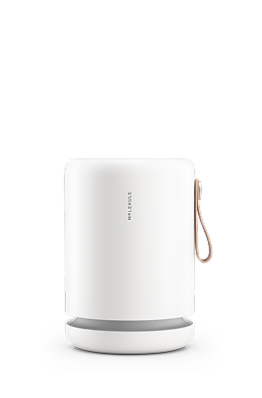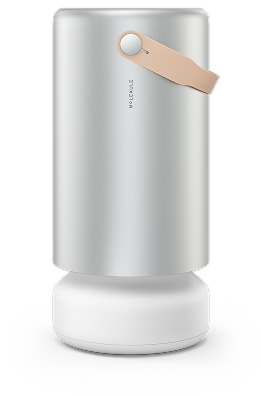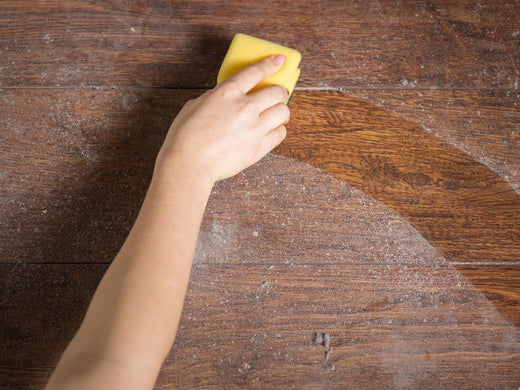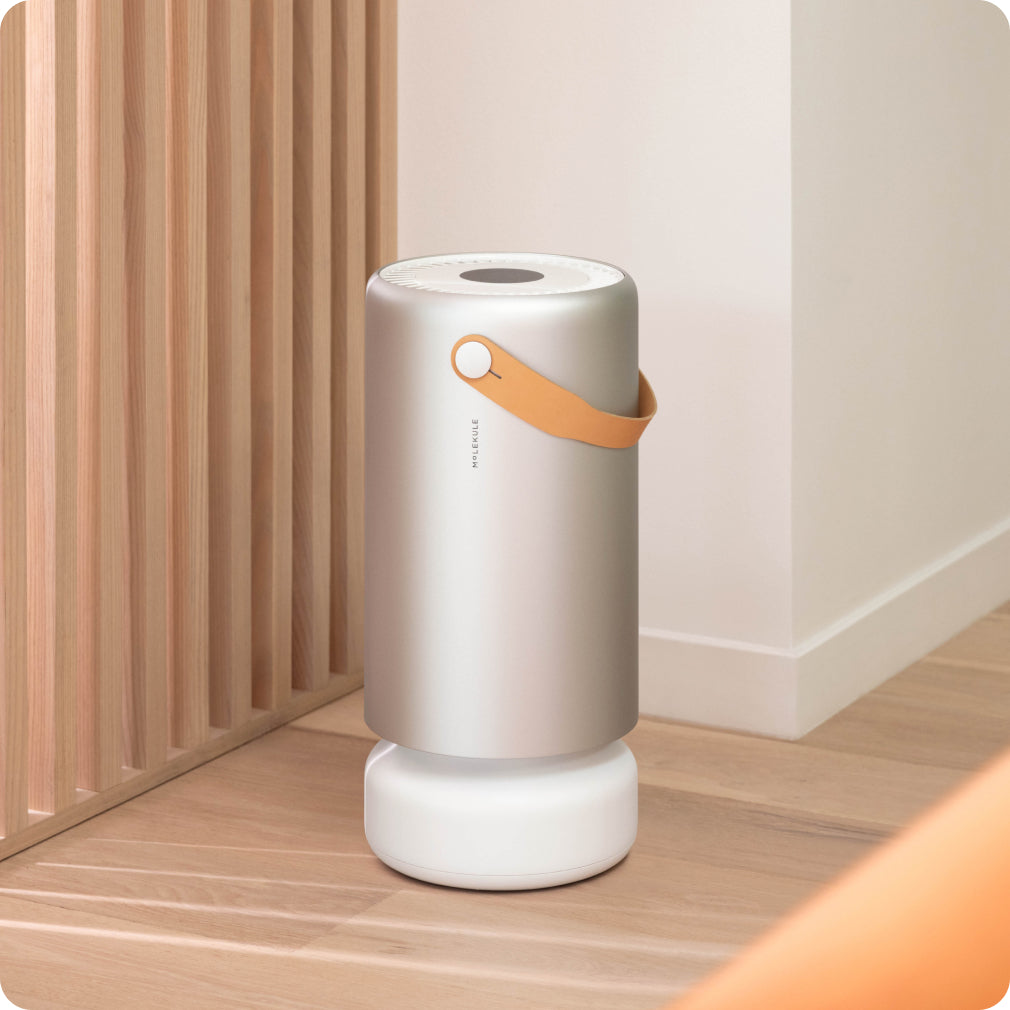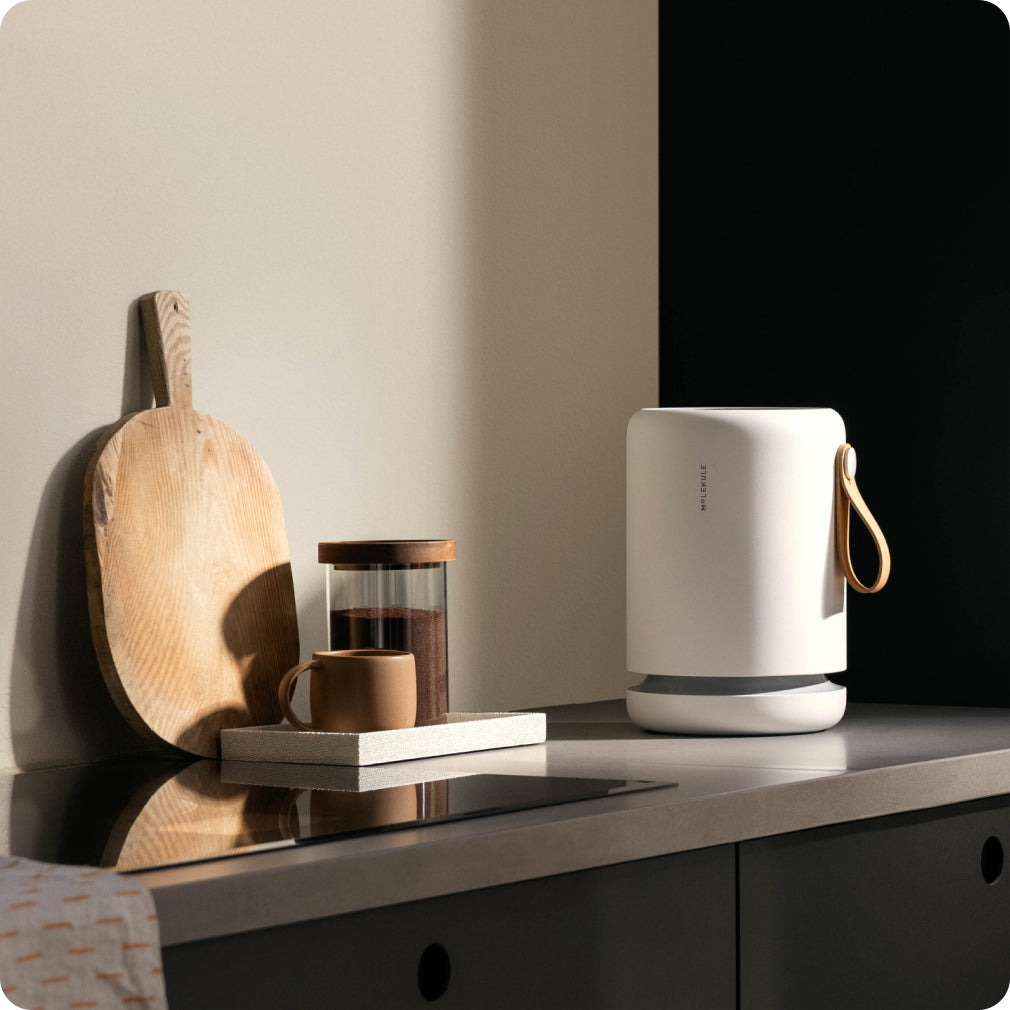If you have a dust allergy, you probably want to know just how to get rid of the seemingly endless amounts of dust that gather in your home. Even if you’re lucky and dust doesn’t cause an allergic reaction, it’s unsightly and can deteriorate the air quality of your home. In fact, even if you don’t have a dust allergy, the components found in dust can affect your lungs and overall health. An advanced air purifier can be a good solution to help reduce airborne dust and improve your indoor air quality.
How much dust you have in your home depends on several factors including where you live, the season, how many people live in your home, whether you have pets, and even how you clean. Though dust itself is complicated — even to researchers who devote their time to studying it — getting rid of it is not. Read on to learn where dust comes from, the impact it has on your health, and how to make your home as dust-free as possible.
Contents
Where does dust in a house come from?
The bulk of house dust varies considerably from home to home. It is often dirt, skin cells, or fabric fibers, but could be more or less anything that could dry and flake off. Books, carpet, rugs, upholstered furniture, fireplaces, and pets all contribute to the dust load. Dirt, pollen, smoke, exhaust, sand, and many other things may bring in dust from outside. In addition, mold, bacteria, and dust mites are all likely to inhabit and often proliferate in dust. In a 2010 Time article, Paloma Beamer, a professor of environmental policy at the University of Arizona, comments: “dust is a hodgepodge of all sorts of things. It would probably be impossible to make a list of all the possible items.”
Though fighting dust can feel like a never ending battle, it’s one worth fighting. Essentially, a combination of particles from both indoors and outdoors, that floats in the air and settles on surfaces.
A study conducted by Beamer found that “the specific dust mix in any household differs according to climate, age of the house and the number of people who live in it — not to mention the occupants’ cooking, cleaning and smoking habits” and “the majority of household dust — about 60% — comes from outside, through windows, doors, vents and, significantly, on the soles of your shoes.” Though her research is nearly a decade old, no recent studies have found error in her findings.
What this tells us is that it’s not just having dust in our homes that matters but what the dust itself is made of. Let’s take a look at some of the common components of dust:
Pollen, soil, and particulate matter
As mentioned above, 60% of household dust comes from outside. Pollen, a well-known allergen, can come inside on your shoes, your clothes, and even your hair. As you move around in your home, you’re spreading the pollen, which then floats in the air and settles onto surfaces. This is also true of soil, particulate matter from smoking, and any other outdoor contaminants you can think of.
Dust Mites
Dust mites are microscopic pests that occur naturally and thrive in humid environments. Even if your home isn’t abnormally warm or damp, it’s likely that you have dust mites hiding out on your bedding, carpets, and curtains. Since dust is made up of things like pet dander and dead skin — some of dust mites favorite snacks — the more dust you have, the more dust mites you have.
Pet Dander
Pet dander — the tiny flecks of skin that animals shed — is another common allergen found in the air. Even if you don’t have a pet of your own, people coming into your home could have pet dander on their clothing. When pet dander gets into the air and settles, it collects dust and dust mites, exacerbating the problem.
Dead skin
It’s a common misconception that dust is mostly dead skin particles. While it’s true that dust can and often does contain dead skin, it’s usually not as big a percentage as people think. Instead, what dead skin is floating around in your home acts as a magnet for dust mites and other indoor air pollutants.
Food debris
If you’ve ever eaten a meal in front of the living room television, you know how easy it is to spill a few crumbs. If you sweep up that food debris immediately, you won’t have much of a problem. However, all too often, small food particles are dropped and forgotten, making them a natural component of dust.
Insects and insect droppings
The body parts and fecal matter of insects, especially cockroaches, are commonly found in dust. If you happen to be allergic to cockroaches, this could aggravate allergic reactions. Cockroaches aren’t picky about which homes they infest. So, even if your house is spotless, these pests can enter from their outside environment, the neighbor’s house (especially if you live in an apartment), or can be brought in through the plumbing.
Lead, arsenic, and DDT
Most components of dust are allergy triggers but don’t pose an immediate health risk. However, in the study we mentioned above, researchers found that lead, arsenic, and DDT can be present in dust, albeit in trace amounts.
Beamer and Layton (another environmental policy professor and the co-author of this study) noted, “about one-third of the arsenic in the atmosphere comes from natural sources … the rest comes from mining, smelting, burning fossil fuels and other industrial processes. Even in relatively low concentrations, arsenic is not without risk, especially to small children who play on the floor and routinely transfer things from their hands to their mouths.
The same is true for lead, which comes less from wall paint — the source most people would expect — than from auto exhaust, smelting and soil deposits.
The fact that DDT is still in house dust is a surprise to most people, since the pesticide was banned in the U.S. in 1972. But a house is a little like a living organism: once it absorbs a contaminant, it may never purge it completely.”
What happens when you breathe in dust particles?

Not only can dust make your home look and feel dirty, it can also impact your health. Generally, the type and size of a dust particle determine how toxic it is and which part of your respiratory tract it irritates. The larger dust particles are usually trapped in your nose and mouth and are easily breathed out. Finer dust particles pose more risk; they are able to penetrate your lungs and, if ultrafine, can be absorbed directly into your bloodstream.
Other factors that can impact your health are the amount of dust in the air and how long you’re exposed to it. Even small amounts of dust can trigger allergic reactions in those with dust allergies. It’s important to understand that even if you don’t have a so-called dust allergy, you could be allergic to any one of the particles it contains — from pet dander to cockroaches to pollen. Even for people without specific allergies, breathing in large amounts of dust can be harmful to your health.
The symptoms of an allergic reaction to dust include:
- Sneezing
- Runny nose
- Nasal congestion
- Cough
- Watery eyes
- Itchy throat
If you have asthma that is triggered by a dust allergy, you may experience more severe symptoms like trouble breathing, chest tightness, and wheezing.
Regardless of whether you have an allergy, it’s important to minimize the amount of dust you’re exposed to.
Hidden places dust collects in your home
A quick walk through your house can show you the obvious places that dust tends to gather — from windowsills to book shelves. In fact, most surfaces collect a thin layer of dust. You may not be able to detect it easily but you know it’s there. Fortunately, dust in common places may not be a huge problem, since it’s likely that you clean these areas regularly. It’s important that you dust these less noticeable placed, too, since dust attracts more dust.
- Blinds — The slats on your blinds are a prime gathering spot for dust, so make sure to wipe in between each slat.
- Electronics — Dust is bad news for your electronics and can collect on and behind computers, televisions, and video game consoles. Anything that operates electrically should be dusted regularly.
- Ceiling fans and lighting fixtures — As dust and all of the things it’s made up of float in the air, they begin to settle on any available surfaces. This means your ceiling fans and light fixtures are first to get covered.
- Tops of doors, windows, and cabinets — Again, these higher surfaces may be out of sight, out of mind but the amount of dust they gather can be alarming.
- Upholstery — Dust mites, pet dander, and dead skin can get into your upholstered furniture, curtains, and bedding.
- Baseboards and carpeting — Dirt, pollen, and other outdoor contaminants are tracked in and distributed onto the floors in your home.
How to get rid of dust in your home

You won’t ever be able to completely rid your home of dust but the more you can eliminate, the better. As we’ve discussed, the components that make up dust can cause serious health problems, make your home feel dirty, and pollute the quality of the air you breathe. Here are some tips for getting rid of dust in your home, the right way.
Use a damp cloth to dust
Don’t use a feather duster to remove dust from surfaces. All this actually does is release the dust back into the air to settle down elsewhere. Instead, wet a cloth with water, surface cleaner, or furniture polish and dust with that. This traps the dust, allowing you to get the surfaces completely clean.
Clean from top to bottom
When you clean from the bottom up, you won’t be able to remove dust as thoroughly, since the dust from the higher places will settle to where you’ve already cleaned. Cleaning from top to bottom eliminates this problem. Don’t forget the hidden spaces we listed above!
Change your bedding weekly
Dust mites, pet dander, and dead skin — three things commonly found in dust — can collect in your bed. Washing your sheets and comforter weekly will help cut down on the amount of pollutants you find in your home.
Clean and dust your electronics
In addition to cleaning other surfaces in your home, special attention should be paid to your electronics. Keeping them dust-free will not only lessen the overall dust in your home but will keep your electronics in better working order.
Don’t wear shoes in the house
Remember when we said that up to 60% of dust particles are tracked in from outside? You can drastically decrease that number by removing your shoes before you enter your home. If that’s not possible, just avoid wearing them past the front door.
Clean your floors regularly
If at all possible, opt for hardwood floors. It’s much easier to remove dust from non-carpeted floors. If this isn’t an option, be sure to vacuum regularly using a vacuum with a HEPA filter.
Keep humidity levels low
Keeping humidity levels at 40% or less can help make your home less hospitable to moisture-loving dust mites.
Change HVAC air filters
HVAC filters in heating and air conditioning units can trap dirt, dust mites, and pet dander. Changing them regularly can help prevent dust from collecting, and make the air in your home easier to breathe.
Use an air purifier
Air purifiers with HEPA filters can capture 99.97% of small particles, but are ineffective against toxic gases and chemicals like DDT. Molekule air purifiers are equipped with a PECO-HEPA Tri-Power filter that captures inorganic dust, and actually destroys organic pollutants like dust mite and pet dander, as well as chemicals like DDT.
Groom your pets
Even if you aren’t allergic to pet dander, keeping your pets well-groomed can help cut down on the amount of dust and dust mites in your home.
Declutter
Clutter may not seem like a big deal but it’s very attractive to dust. The more organized your home is, the fewer places dust will be able to settle.
Pest control
Even if you haven’t seen cockroaches or other pests in your home, it’s a good idea to have pest control treat your home and yard regularly. Prevention is key here because when pests begin to enter, it can be hard to get them under control.
Keep air circulating
As you clean, dust can float in the air and take hours to settle back down. You can combat this by opening a window and turning on a fan so fresh air will circulate into your home.
Though you’ll never be able to get rid of dust completely, you can take steps to minimize your family’s exposure to it. By eliminating as much dust as possible through regular, thorough cleaning, you’ll be improving the air quality in your home and keeping yourself and your family healthy.
